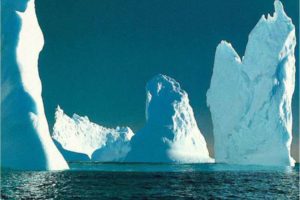antarctic ice sheet
Simultaneous ice melt in Antarctic and Arctic
The end of the last ice age and the processes that led to the melting of the northern and southern ice sheets supply basic information on changes in our climate. Although the maximum size of the ice sheet in the northern hemisphere during the last ice …
Climate change to continue to year 3000 in best case scenarios
New research indicates the impact of rising CO2 levels in the Earth’s atmosphere will cause unstoppable effects to the climate for at least the next 1000 years, causing researchers to estimate a collapse of the West Antarctic ice sheet by the year 3…
Is the ice at the South Pole melting?
The change in the ice mass covering Antarctica is a critical factor in global climate events. Scientists at the GFZ German Research Centre for Geosciences have now found that the year by year mass variations in the western Antarctic are mainly attri…
Marine animals suggest evidence for a trans-Antarctic seaway
A tiny marine filter-feeder, that anchors itself to the sea bed, offers new clues to scientists studying the stability of the West Antarctic Ice Sheet — a region that is thought to be vulnerable to collapse(1).
As part of a study for the Ce…
New South Pole Seismic Station One of World's Quietest, Most Sensitive
Data collected by a new seismic observatory at the National Science Foundation’s Amundsen-Scott South Pole Station indicate that it is the quietest listening post on the planet for observing shudders produced by earthquakes around the world as they vibrate through the Earth. The South Pole Remote Earth Science Observatory is located eight kilometers from the South Pole and the new seismometers have been installed roughly 300 meters beneath the surface of the continental East Antarctic ice sheet in specially drilled boreholes.
Hitchhiking rocks provide details of glacial melting in West Antarctic
Rocks deposited by glaciers on mountain ranges in West Antarctica have given scientists the most direct evidence yet that parts of the ice sheet are on a long-term, natural trajectory of melting. The West Antarctic Ice Sheet has been melting and contributing water continuously to the ocean for the last 10,000 years and is likely to keep doing so, says John Stone, University of Washington associate professor of Earth and space sciences. Measuring and understanding changes in the Earth?s ice sheets over the past few decades, and predicting their future behavior are major challenges of modern glaciology. But it is important to view these changes in the context of what?s been happening naturally over centuries and millennia. This work establishes a background pattern of steady decline in the West Antarctic ice sheet.


